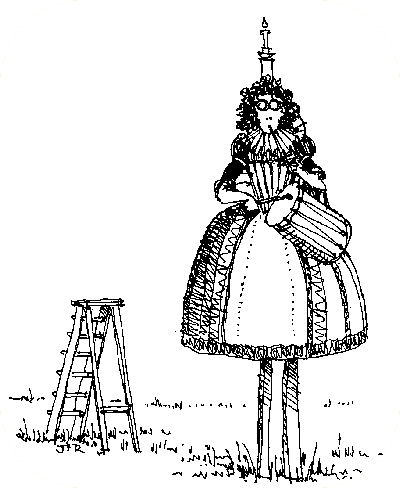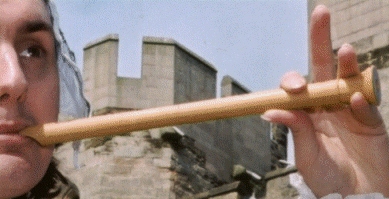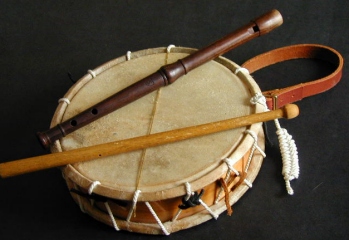home page
The Pipe and Tabor Compendium
visit this site to hear how the pipe and tabor sounds
project manager: frances
This site is currently being developed: thank you for your patience.

The pipe and tabor is a musical instrument that may date back as far as Roman times in the UK. It has been in and out of fashion from that time to the present-day throughout Europe and many European colonies: sometimes highly fashionable in aristocratic circles and at others solely a rustic / folk or working class activity. Pipe and tabor players (or whatever else they have been named at the time), have been prosecuted just for playing on a Sunday in England, whereas in countries such as Spain it was, and still is, used as an element of religious symbolism and celebration. In other countries and at other times it was considered to be purely secular, used for entertainment indoors and out.
During the late 20th century revivals in early music, historic and morris dance ensured that the pipe and tabor continued to be seen in the concert hall, at heritage events, historic re-enactments and outside in parades and outside public houses.
The pipe and tabor is found on almost every continent. Sometimes this is a continuing tradition, in other places it is a colonial import from Europe; occasionally the player just likes the sound and has adapted their style and music to suit In some areas the pipe and tabor is played with another instrument, such as the bagpipe. An example of a band playing transitional instruments from Morocco.
This website is a project in its infancy. Much of the history of the pipe and tabor has yet to be re-discovered and made available to students of history, music, dance and the fine arts. The pictures and history gathered together on these pages for the first time encompass well-known facts and completely original research. It is contributed to by players, researchers, photographers and other individuals, museums and other organisations such as those involved in early music, architecture, ceramics and fine art. Research continues.
Click here for Danse de Cleves
So if you know of something that is not yet on this site please contact Frances, the project manager, who would love to add your knowledge to this pool.
Check this site's FAQ for further information about the pipe and tabor today. Please note that Frances is available to give talks and workshops at your folk or historically-themed event.
From the project manager: copyright. I have tried to locate copyright holders and gain appropriate permissions. However if you feel I have infringed your copyright in any way please contact me.
Many different people and organisations have given me permission to use their images and /or link to their websites. I have tried to acknowledge everyone's contribution to this project and welcome offers to link and /or add information to this unique and valuable store of knowledge about a largely unrecognised traditional instrument. Alberto has another good collection of images here, Wim Bosman discusses the Low Countries here. Writings in many languages are available such as here by Rafel and Teresa. A description of the tabor pipes found on the Mary Rose is here.
Questions can be put to members of The Taborers Society, a UK organisation with international contacts, on their discussion site.
If there are any aspects of this Compendium that are not working please let me know so that I can correct them.
Thank you. +++
top of page

